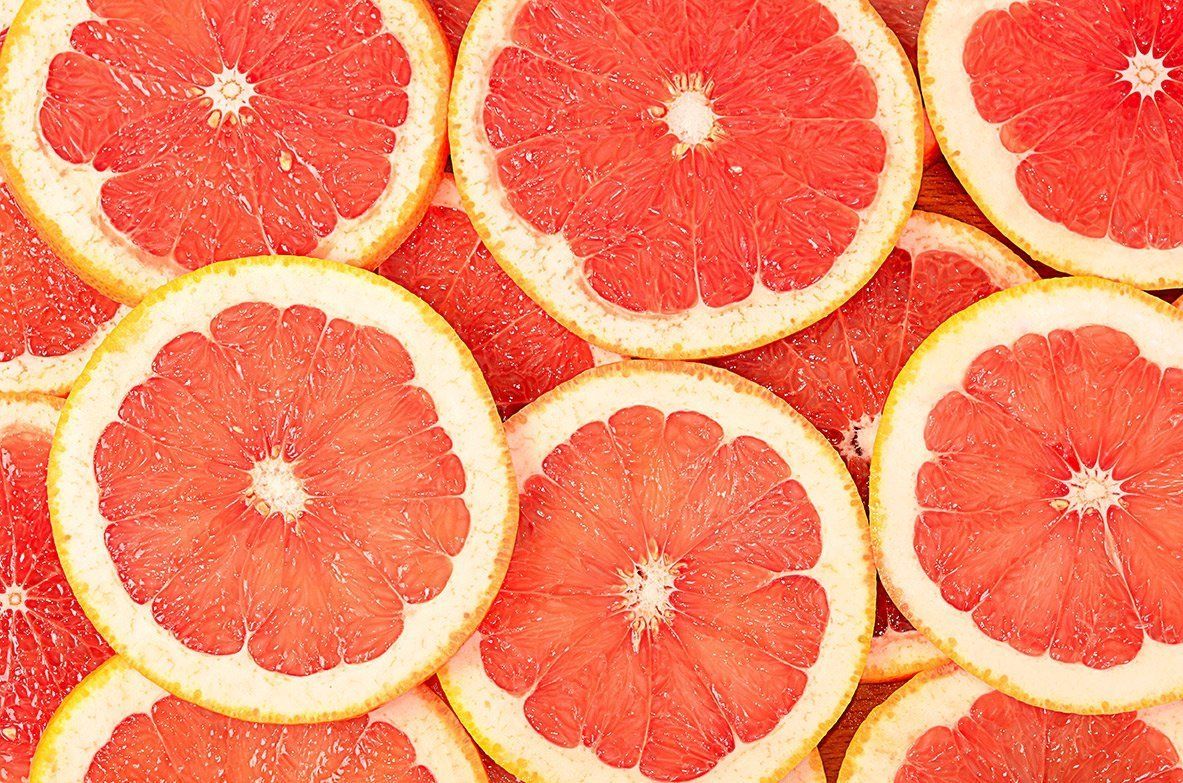Iron in our bodies
What does the human body do with iron (Fe*), which is by mass the most common element on Earth?
Our bodies use iron in transporting oxygen by blood and in storing oxygen in muscles, but we don't need much of it. An adult male body of 165 to 180 lbs contains about 0.14 oz of iron. We get the small amount of iron that we need from food because our bodies can't produce it.
Iron is absorbed by the small intestine and transferred into the blood. Interestingly, the body self-regulates iron levels, increasing absorption when there is a deficiency and decreasing it when there is too much. In mammals, there is no pathway to rid the body of excess iron, so iron levels are regulated at the point of absorption. As you might guess, too little or too much iron is not good for us.
In our bodies, iron is a major component of hemoglobin, a type of protein in red blood cells that carries oxygen from our lungs to all parts of our body. Without enough iron, insufficient oxygen is transported, leading to fatigue, one of the symptoms of iron-deficiency anemia. Iron is also part of myoglobin, a protein that carries and stores oxygen specifically in muscle tissues. Our bodies also use iron in brain development and growth for children and for the normal production and function of various cells and hormones.
Which foods contain iron? How about supplements?
There are two types of iron in foods:
- heme iron - found in red meat, poultry, canned sardines and canned light tuna, organ meats, etc. This type is most easily absorbed by our body, at a rate of 15% to 35%.
- non-heme iron - found in spinach, iron-fortified breakfast cereals, enriched rice or bread, beans, dried fruits, nuts and seeds, tofu, pumpkin seeds, dark chocolate (at least 45% cacao), potato with skin, etc.
While absorption of non-heme iron is only 2% to 20%, the presence of ascorbic acid (vitamin C) increases this absorption rate. Since the human body cannot produce vitamin C, we get it from food: orange and other citrus, red and green bell peppers, kale, broccoli, kiwi, grapefruit, pineapple, spinach, etc. There are also inhibitors of iron absorption, some of which contain non-heme iron, so the best way to ensure sufficient iron intake is to eat a healthy, varied, and balanced diet.
Some doctors also recommend iron supplements for certain individuals, and our pharmacists are happy to consult with you regarding the various types of iron supplements are the one most suited for your situation, especially if you take medications that can interact with iron. Please note that iron supplements need to be kept away from the reach of children as overdosing on iron can be lethal.

Can I increase my iron intake by cooking with cast iron cookware?
The conclusion from a 2021 systematic review of scientific literature suggests that there is some evidence that eating food prepared in iron pots increases the hemoglobin concentration of iron deficient individuals. This review was carried out in the context of finding inexpensive and effective ways to reduce iron deficiency in populations. In 2019, the prevalence of anemia was almost 30% globally.
How can I tell if I lack iron or have too much of it?
Humans typically lose small amounts of iron in urine, feces, the gastrointestinal tract, and skin. Losses are greater in women with periods because of blood loss, especially women with heavy menstruations. Pregnant women need a little more iron than non-pregnant women.
Donating blood also means blood loss, although donors should know that if their hemoglobin level is low, as tested by the pre-donation finger prick, they cannot donate blood. It's not a test of their iron level, but it can signal the need to assess for iron deficiency and/or make an appointment with a doctor. To note, where there is marginal iron deficiency, hemoglobin levels usually remain within the normal range even though iron stores are depleted.
Below are some symptoms to watch for, and the best approach is to talk with a healthcare professional if you have questions. Please feel free to drop by and talk with one of our pharmacists during our extended hours -- you don't need an appointment.
Some signs of lacking iron may include:
- fatigue, weakness
- lightheadedness
- confusion, loss of concentration
- sensitivity to cold
- shortness of breath
- rapid heartbeat
- pale skin
- hair loss, brittle nails
- pica, which is craving non-food items like dirt, clay, ice, etc.
Some signs of having too much iron in the body may include:
- constipation
- upset stomach
- nausea, vomiting
- abdominal pain
Iron overload can also lead to other more serious health concerns, such as cirrhosis of the liver, diabetes, cancer, and death.
It is important to consult if you have any questions or concerns about having too little or too much iron for yourself, a child, or an older loved one.
* Iron is on the Periodic Table as Fe, which is from the Latin word for iron, 'ferrum'.
Resources and References:
- Wikipedia on iron - https://en.wikipedia.org/wiki/Iron
- National Library of Medicine (NIH) on iron and its importance for human health - https://www.ncbi.nlm.nih.gov/pmc/articles/PMC3999603/
- Harvard School of Public Health on iron - https://www.hsph.harvard.edu/nutritionsource/iron/
- Wikipedia on vitamin C sources - https://en.wikipedia.org/wiki/Vitamin_C
- NIH on the interaction of vitamin C and iron - https://pubmed.ncbi.nlm.nih.gov/6940487/
- NIH on the effect of cooking food in iron-containing cookware - https://www.ncbi.nlm.nih.gov/pmc/articles/PMC8266402/
- NIH on intervention for reducing iron deficiency anemia - https://pubmed.ncbi.nlm.nih.gov/12859709/
- World Health Organization on the prevalence of anemia in the world - https://www.who.int/data/gho/data/themes/topics/anaemia_in_women_and_children
- American Red Cross on iron in the body - https://www.redcrossblood.org/local-homepage/news/article/iron-in-blood.html
- NIH on iron - https://ods.od.nih.gov/factsheets/Iron-HealthProfessional/
- National Health Service UK on iron - https://www.nhs.uk/conditions/vitamins-and-minerals/iron/
- Mayo Clinic on iron-deficiency anemia -
https://www.mayoclinic.org/diseases-conditions/iron-deficiency-anemia/symptoms-causes/syc-20355034





